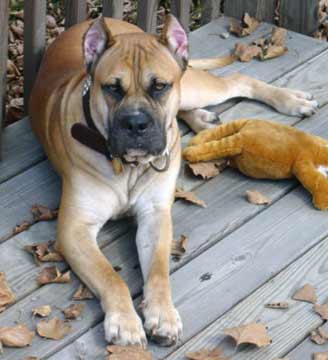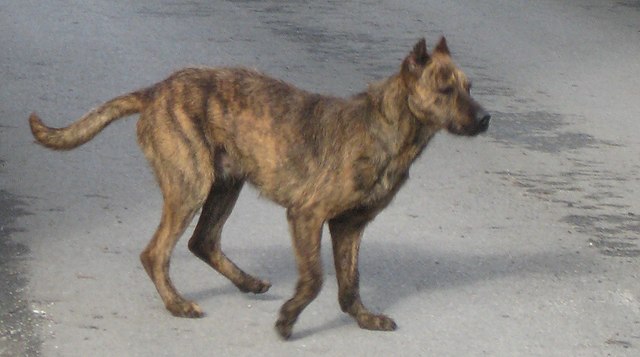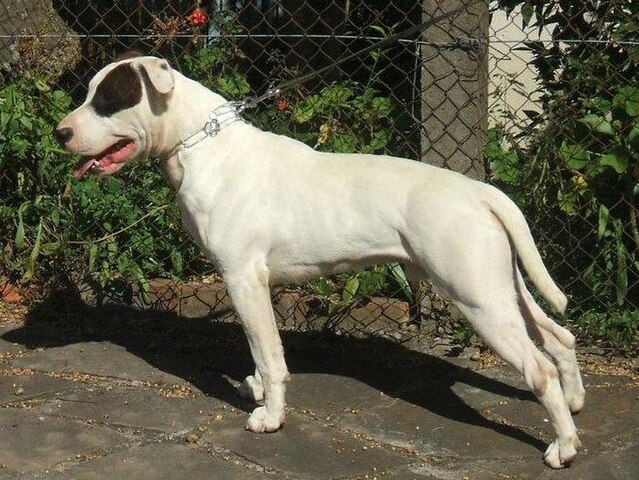The Czechoslovakian Vlcak is actually a breed of dog whose development started in the 1950’s – beginning with an experiment to breed German Shepherd Dogs to Carpathian Wolves. The goal was to produce a dog with the best attributes of the two species. In 1982, the project was considered a success and the Czechoslovakian Wolfdog (as it was called at the time) was recognized as a national breed in the CSSR. Many of the dogs produced were used as police border patrol dogs as well as service dogs in the army. There has been no new wolf blood since the 80’s, which means that this breed is no longer considered a wolf hybrid, and instead is a purebred dog with wolf ancestry.
The Czechoslovakian Vlcak tends to prefer cold weather, doing well in snowy conditions – surely a throwback to the country of origin and wolf ancestry. They can be kept in warmer climates but should be given plenty of air-conditioning, shade, water, etc to keep them cool throughout the day. Other wolf similarities – females only come into season once a year instead of twice like most dog breeds. Czechoslovakians aren’t necessarily barky dogs, however they are known for howling and making other vocalizations. Finally, their coat only comes in “wolf colors” – various shades of gray from yellow, silver or dark gray. In appearance alone, this is probably the closest that one will come to owning a “wolf”, aside from a hybrid.
The Czechoslovakian is considered a rare breed in America, with only about 200 dogs in the country so far. They are part of AKC’s FSS program for rare breeds, however, and are destined for the working group if they ever become fully recognized here. Like other working dogs, they have a fearless nature and a need to have a job to keep them busy. This said, they are more of a primitive type than the typical working breed and have far more of an independent nature. Without plenty of mental and physical exercise they can become destructive.
The Czechoslovakian is a hardy breed with plenty of endurance and stamina. An active dog, they need plenty of vigorous exercise! Like the wolf, this breed has exceptional senses (smell, sight and hearing) and revels in activities which allow them to use these senses. For example, a long hike in a new environment is much preferred to the same old walk around the neighborhood day-in and day-out. This active dog has tons of energy and is hard to wear out, especially when in the younger years. They definitely need an active owner who can go all-out with exercise! Just throwing them in the backyard (no matter how big) and hoping they exercise themselves will not work.
Czechoslovakian Vlcaks are known as Einsteins when it comes to manipulating their environments. Many learn how to open doors (even locked doors), fridges, windows, etc. This can even extend to crates and outdoor gates, which means they can be prone to escaping (not to mention the fact that they can scale large fences and dig under them with ease). Individuals that don’t have enough to engage their minds with are more prone to these boredom-induced behaviors. Looking for the perfect crate for your Czechoslovakian Vlcak? Check out the Petmate Vari Kennel to keep them comfortable and secure – https://amzn.to/3B3CUE6
In obedience, CSVs are enthusiastic and can be quick to execute commands. They are also versatile and make great dogs for competition… for those who are experienced working with dominant breeds. That dominance combined with a tendency toward independence and stubbornness means they are not as easy to train for a novice, and they shouldn’t be owned by first-time dog owners. They must be socialized and taught early by an experienced owner. This breed is exceptionally clever but will require someone just as clever and dog-savvy to raise and train them right. They will not work for just anyone, and they will not work without the proper motivation. Patience, mutual respect and a knack for finding the right balance between structure and motivation are all required for a good outcome. Once this is reached, the breed is quite capable of great things.
Vlcaks are loyal toward their families and can make good companions in homes with children (when socialized to them). With strangers, they are far more aloof and can even remain suspicious for long lengths of time. The breed also may be prone to chasing small animals, due to a high prey drive, and must be kept on leash or in a fenced area. Furthermore, be aware that same-sex aggression is seen in the breed so keeping a number of Vlcaks of the same sex may prove problematic. Keep in mind that this is a large breed with a lot of power! While loyal to “their people”, they do require owners that can respect their size and their instincts.
Czechoslovakians are enthusiastic and vigorous in all ways, which means they can play rough and even give too tumultuous of greetings. They can also be mouthy as youngsters. For these reasons they don’t make great companions for the very young, very old, or generally frail. Training will help to an extent but will not turn them into overly gentle dogs. Owning any dog is always a commitment, but with this breed the commitment might be even higher! Keep in mind they live between 13-15 years on average.
Many owners opt for raw-feeding the Vlcak, however this is a conversation that is best had with the individual breeder. Health wise, most members of the breed don’t have large issues however breeders should be testing for hip dysplasia, degenerative myelopathy, elbow dysplasia and eye issues. If looking for a puppy, verify these tests have been done! While not a huge problem in the United States, other countries have faced issues with irresponsible breeders of Vlcaks trying to make a quick buck off of these wolf-looking dogs.
The CSV does shed quite frequently, however beyond frequent brushing the coat is otherwise easy to take care of. Somewhat weather-resistant, mud tends to fall off of it when dry. They don’t tend to smell too “doggy”, which means that bathing can be infrequent if desired. Keep in mind that the hotter it is, the more the dog will shed while the colder it is, the longer/thicker the coat will be to take care of. When put on a schedule, however, grooming should be an easy (and not too tedious) chore.
![By Tesori di Carli - [1], CC BY-SA 4.0, https://commons.wikimedia.org/w/index.php?curid=42936993 The Czechoslovakian Vlcak](https://academichound.com/wp-content/uploads/2020/06/Czechoslovakian-Vlcak.jpg)
Affiliate Disclaimer
As an Amazon Associate, I earn from qualifying purchases. This means that if you click on an affiliate link on this site and make a purchase, I may earn a small commission at no additional cost to you. Rest assured that I only link to products I have used, or use on a regular basis, and trust enough to recommend them to you!



